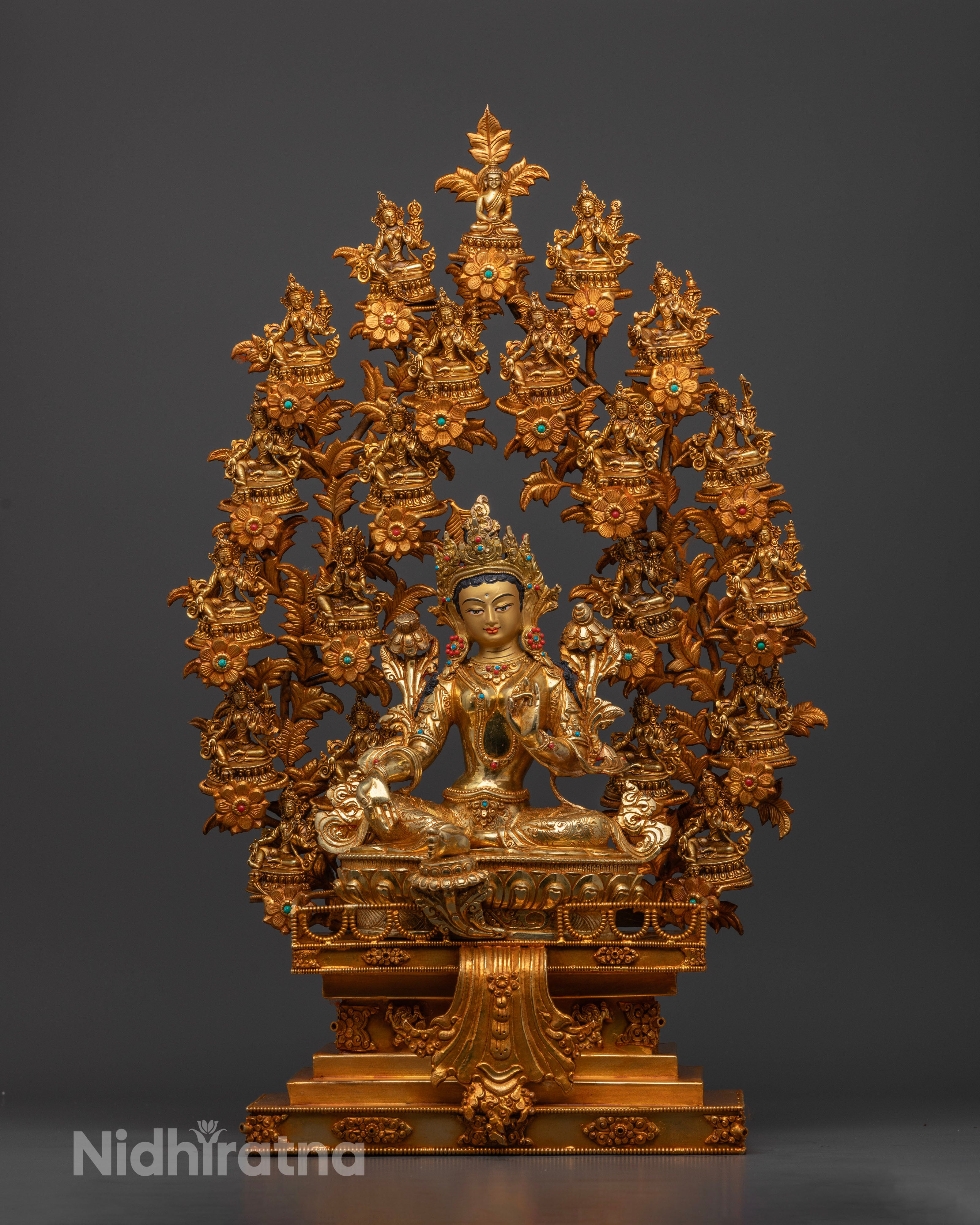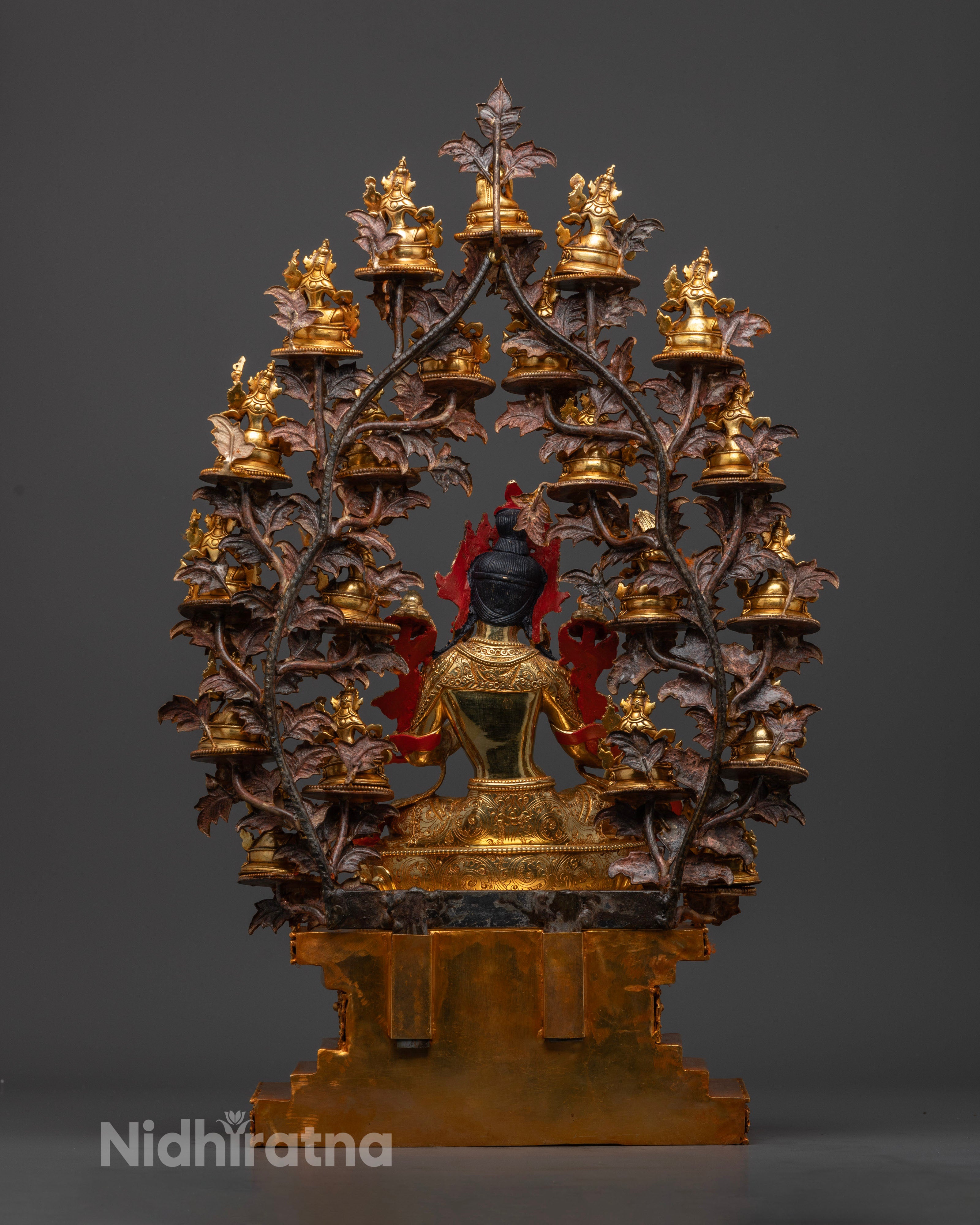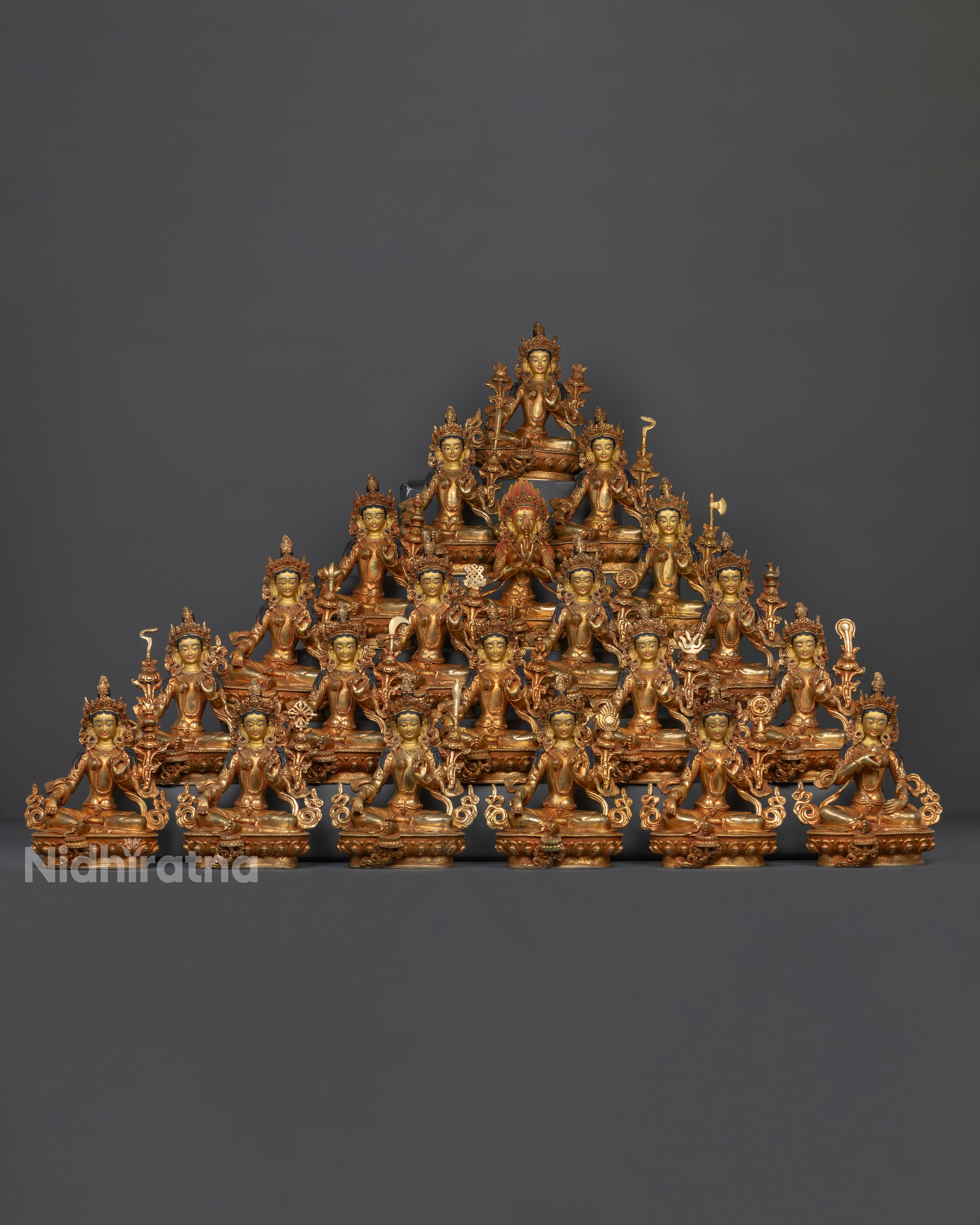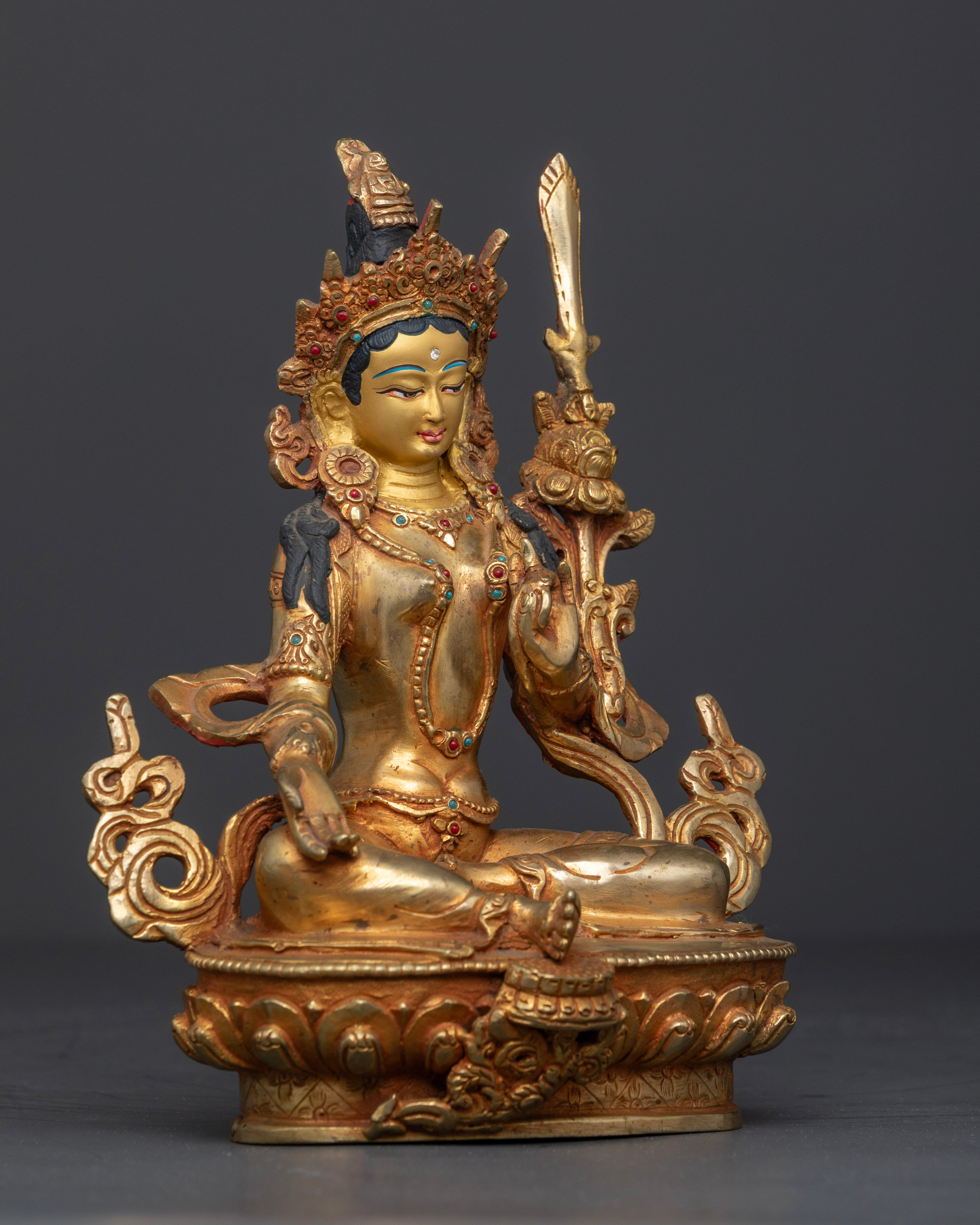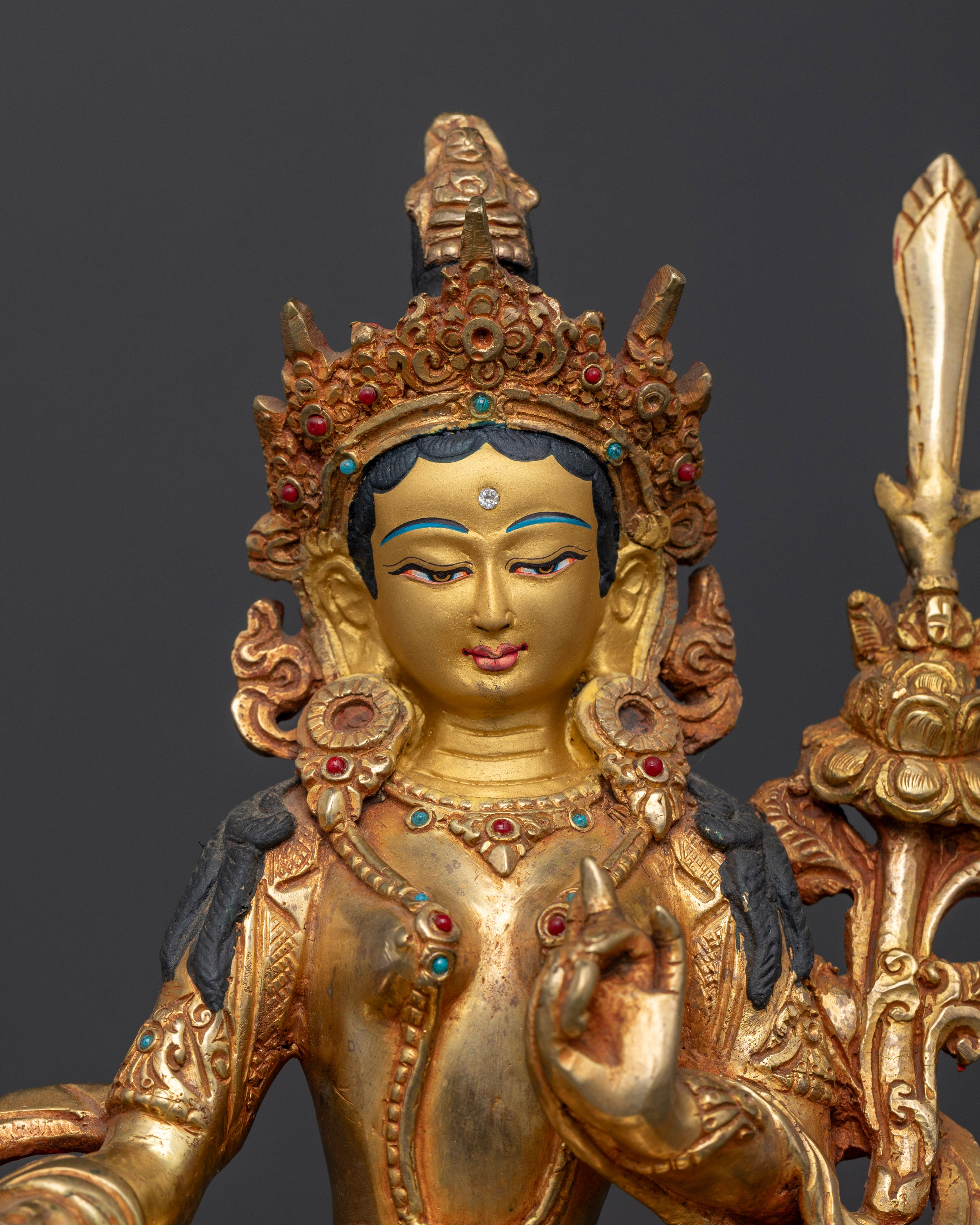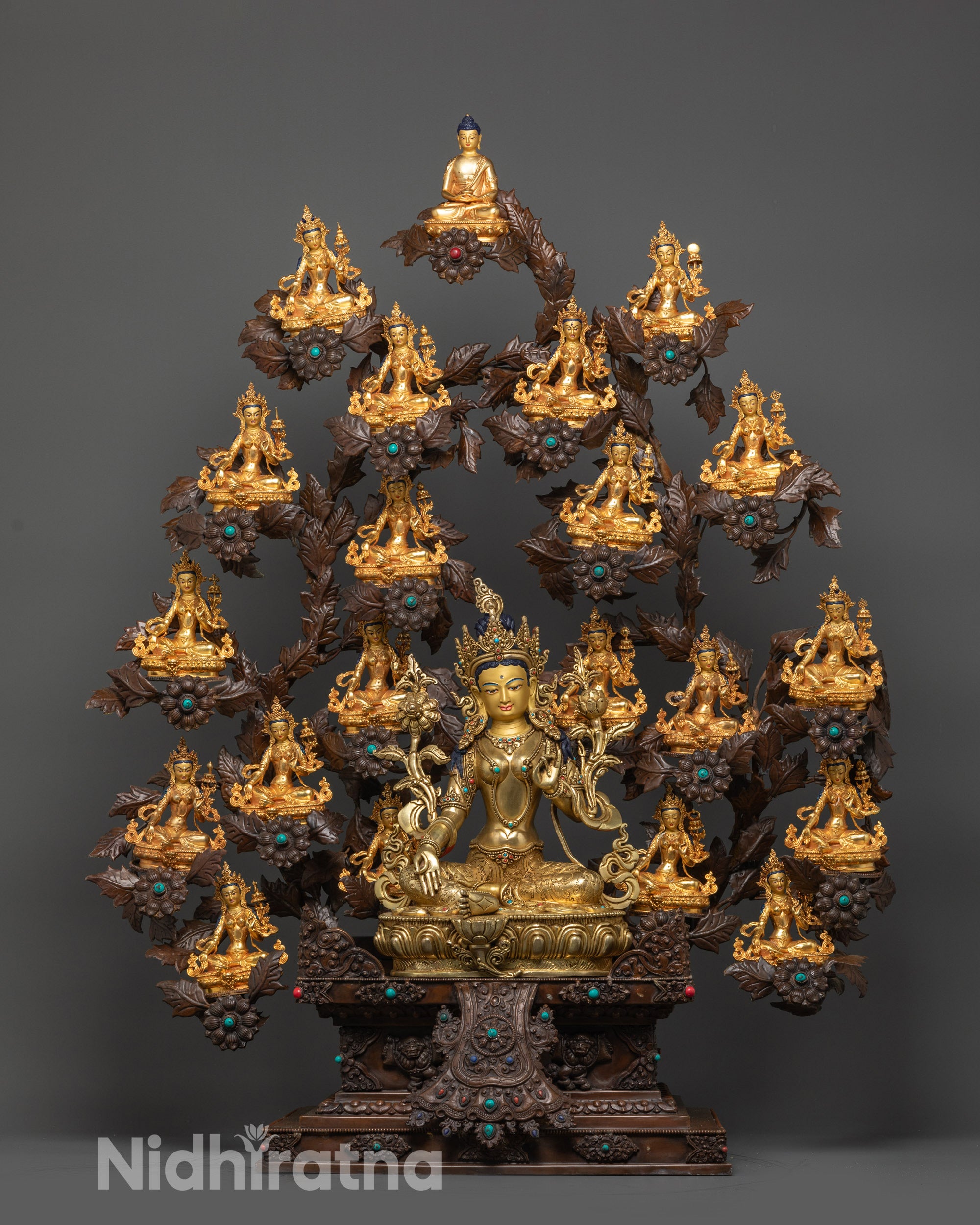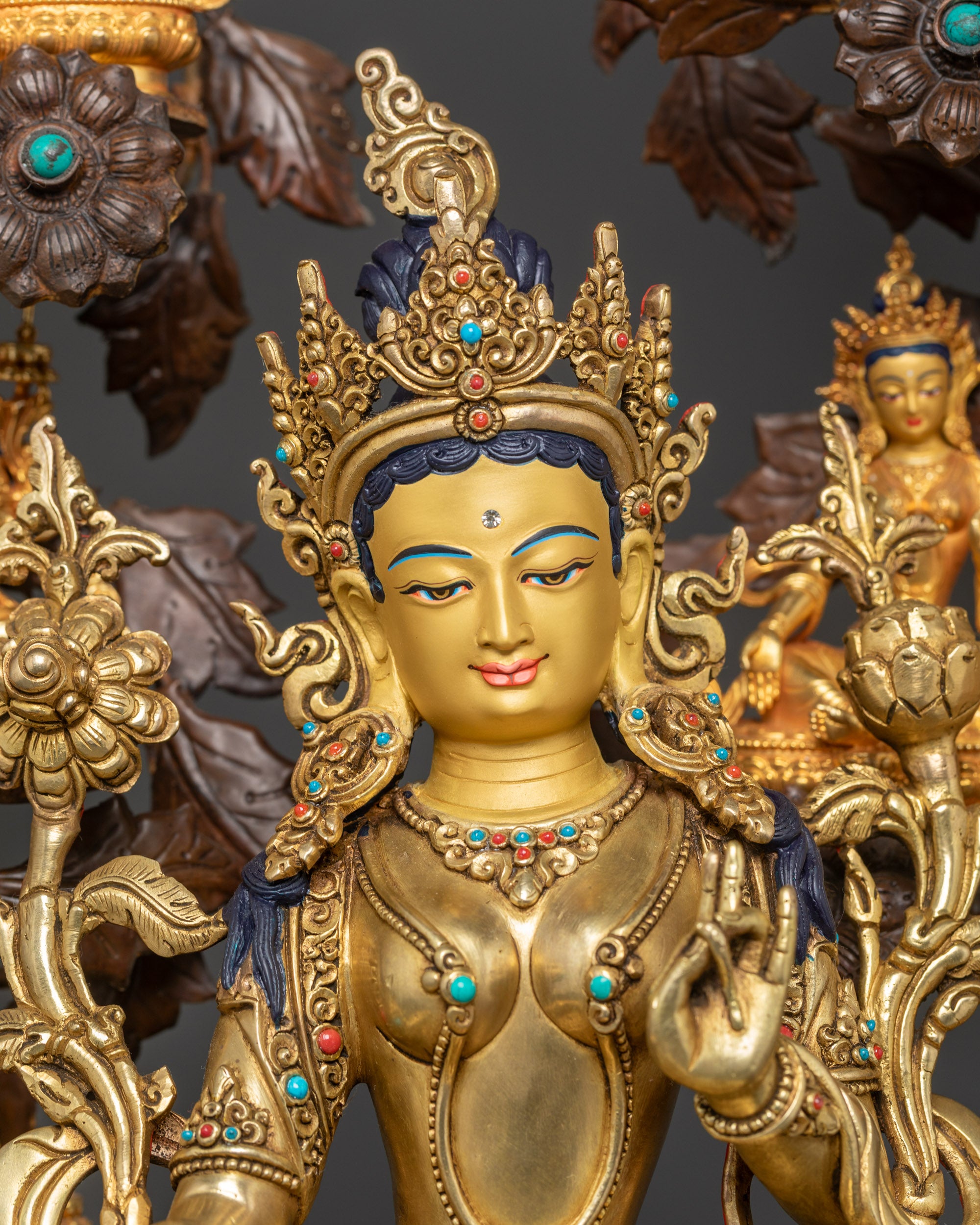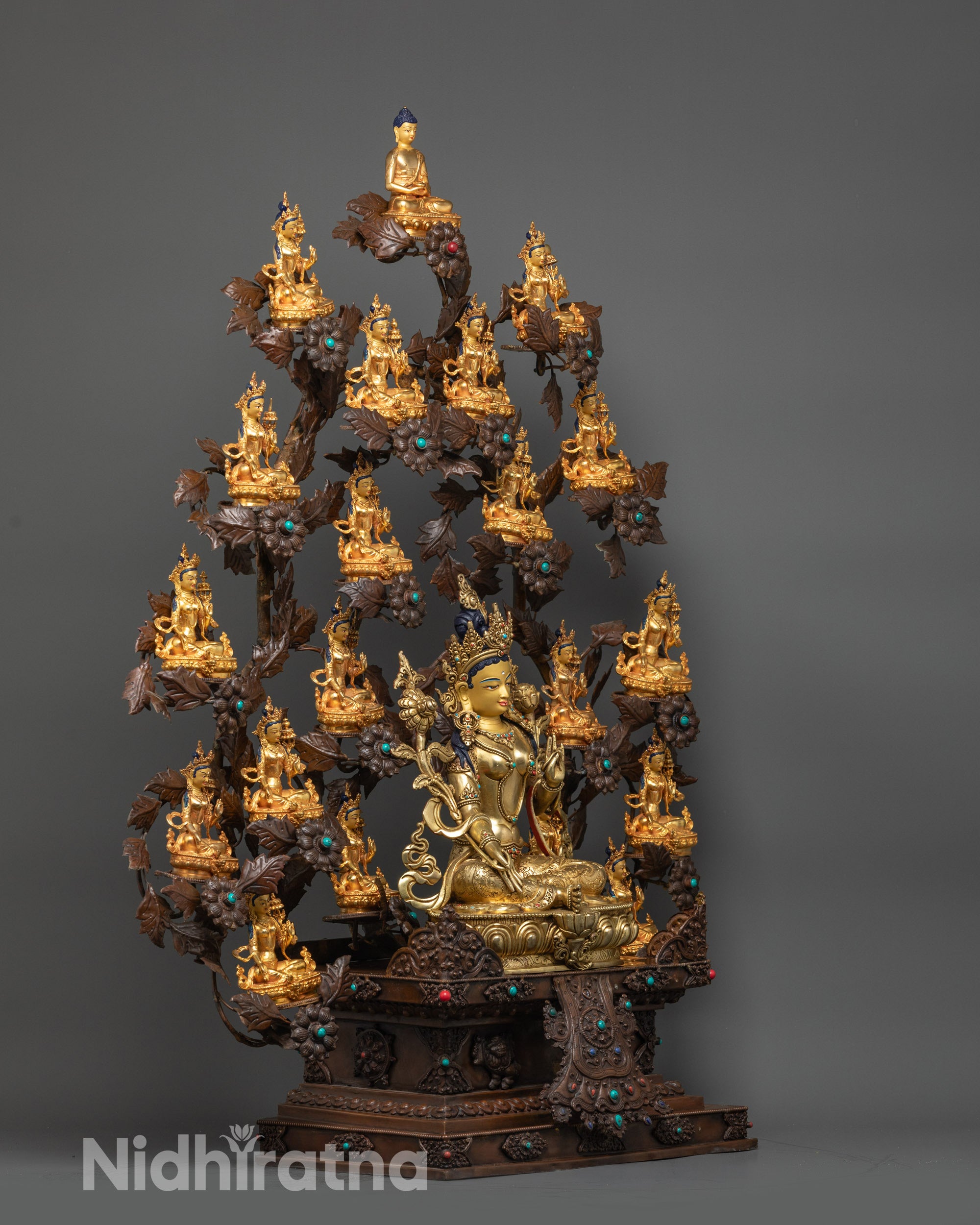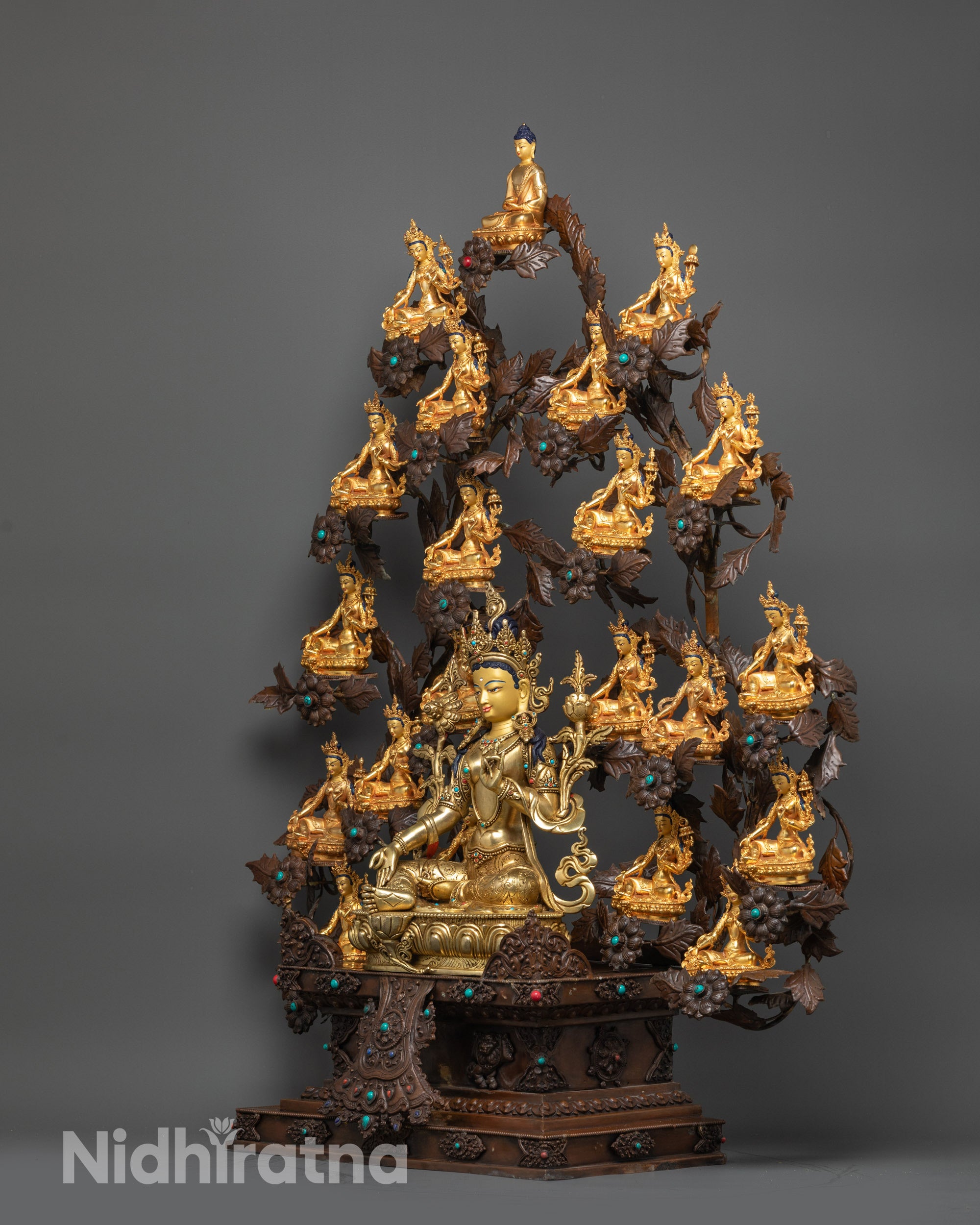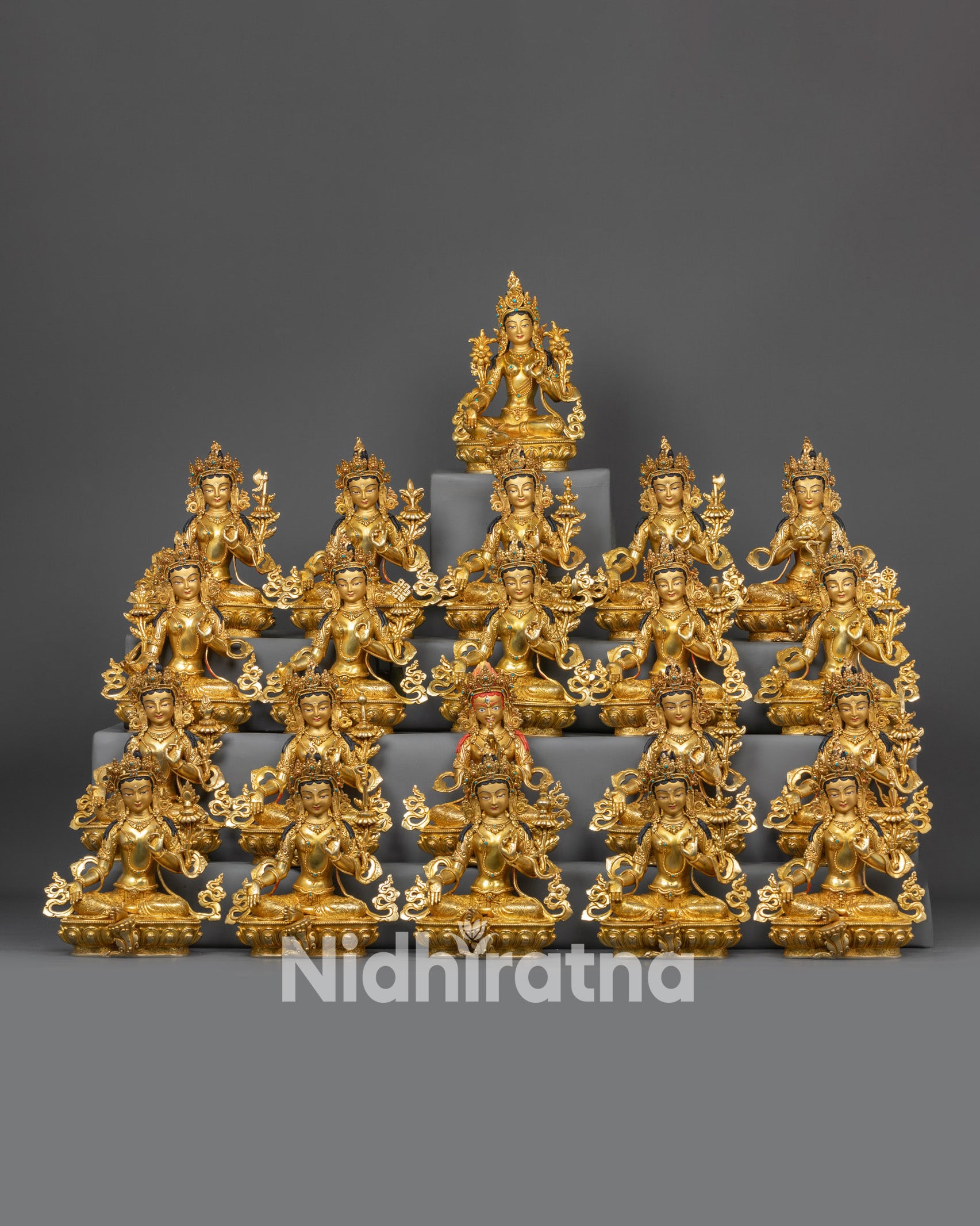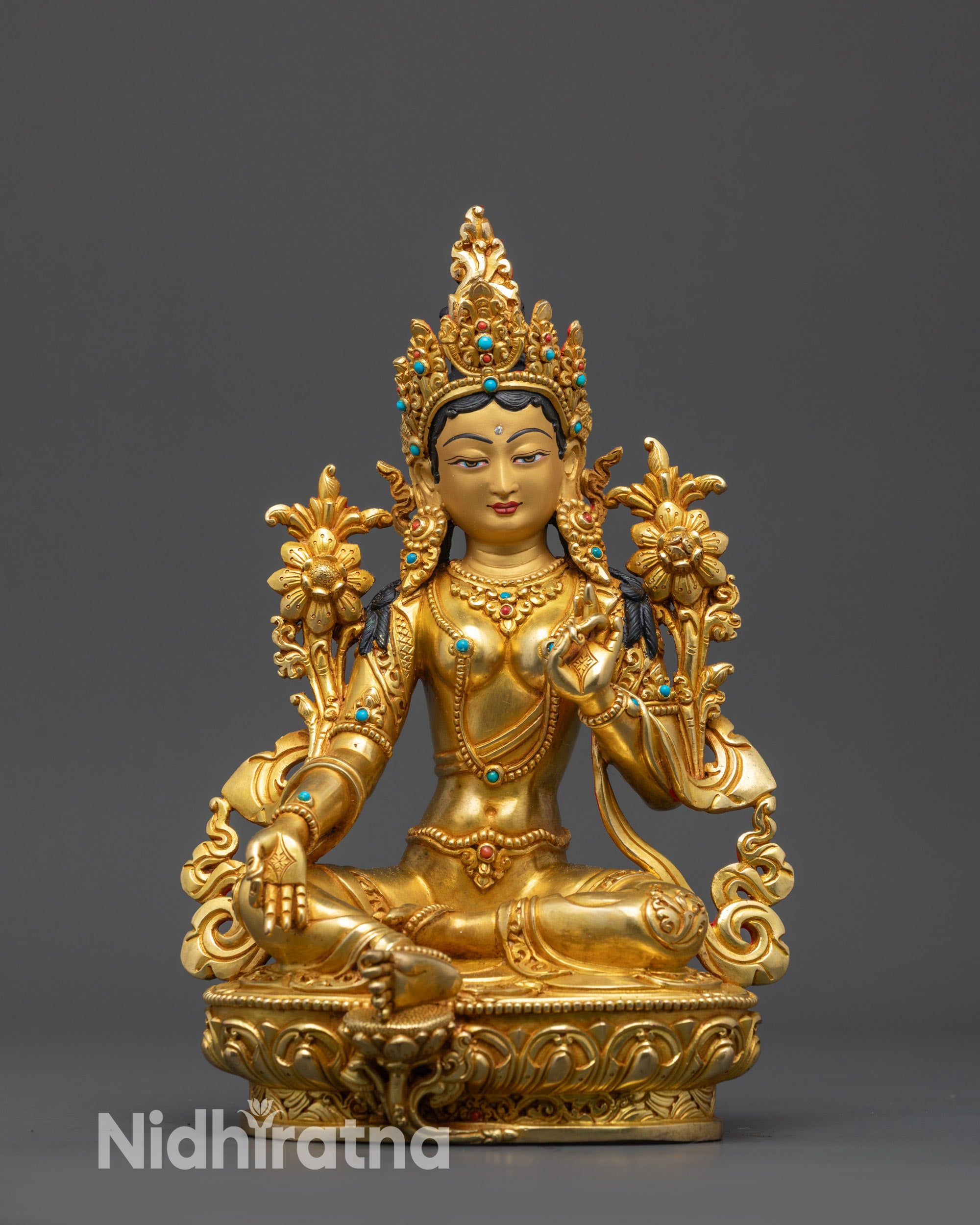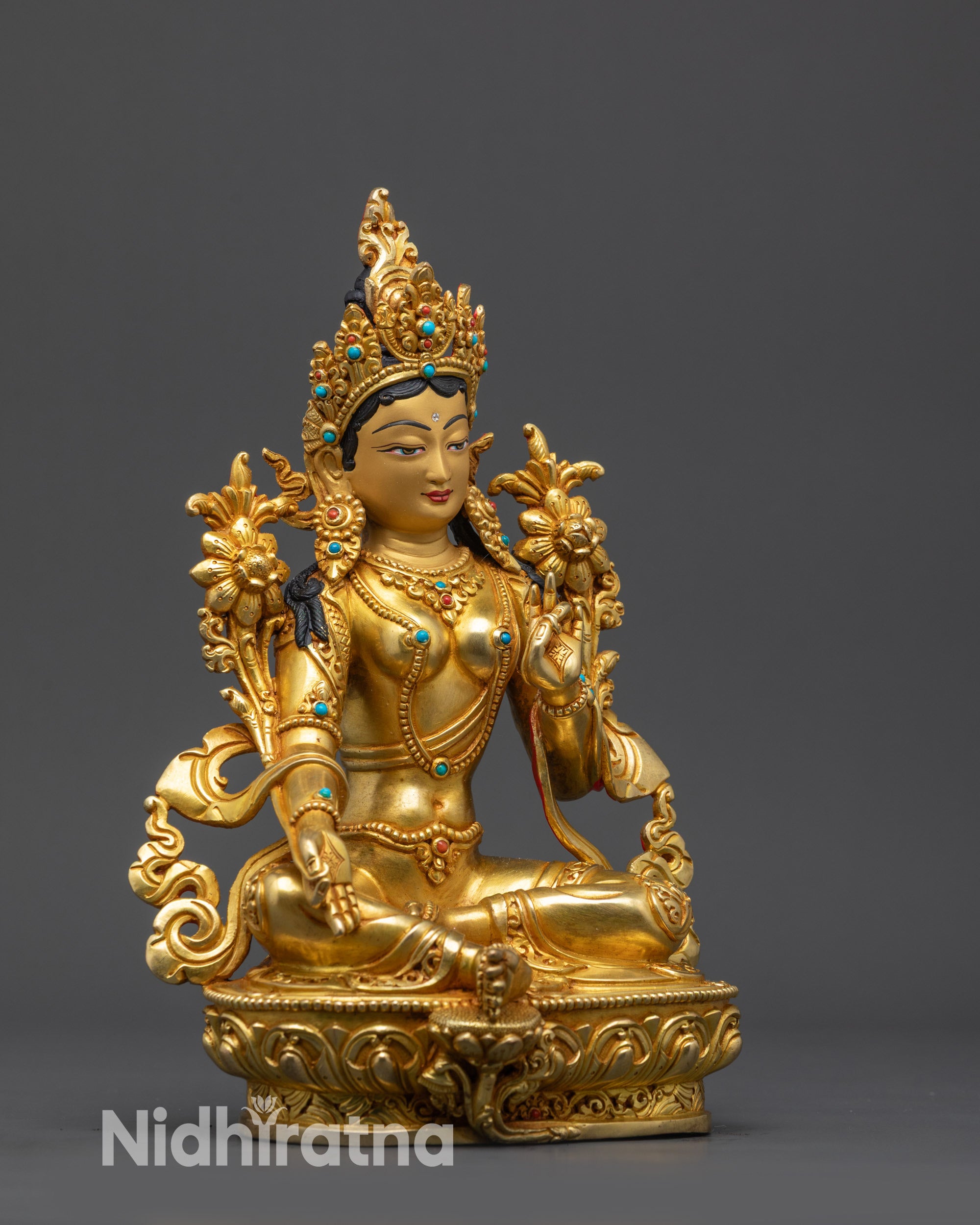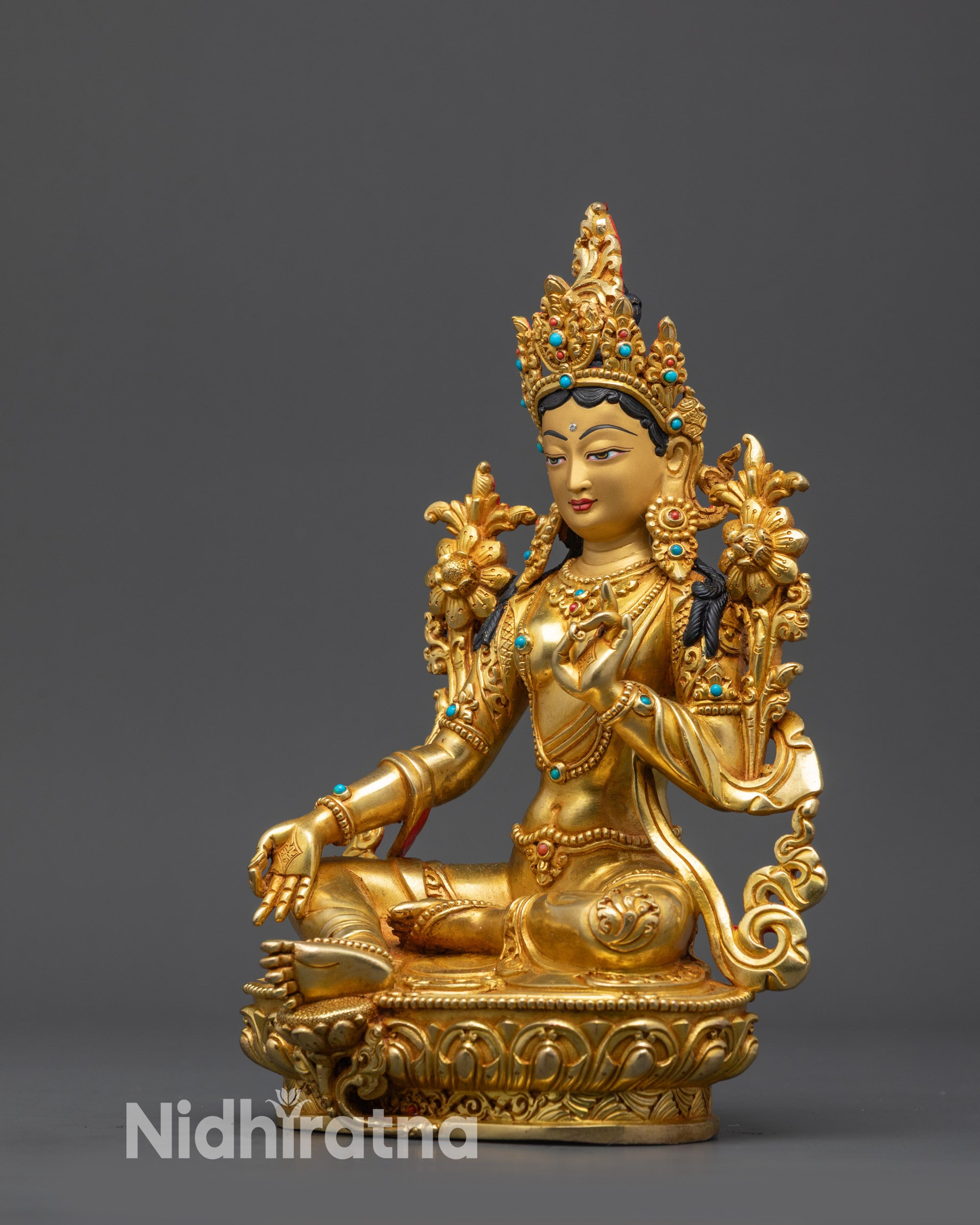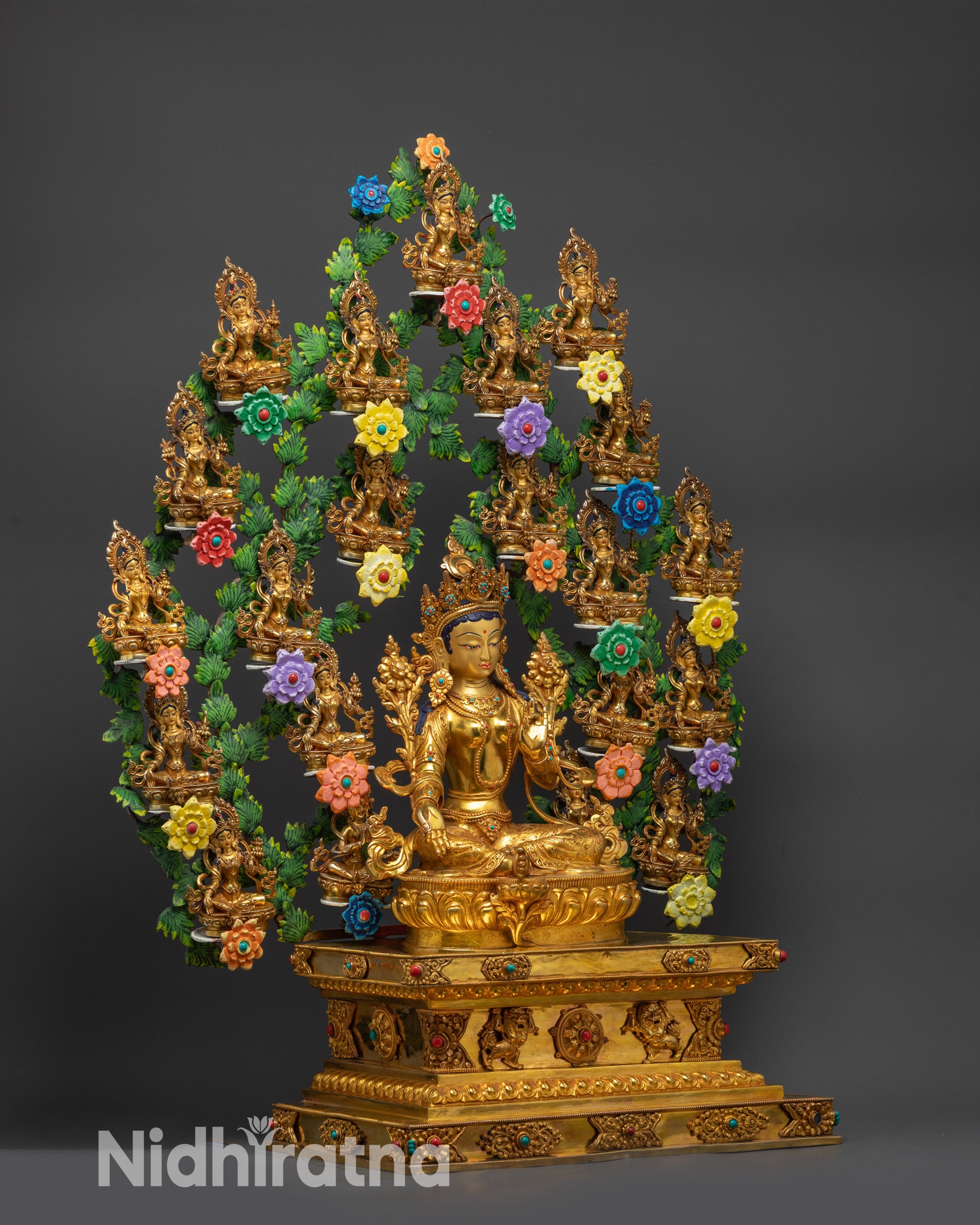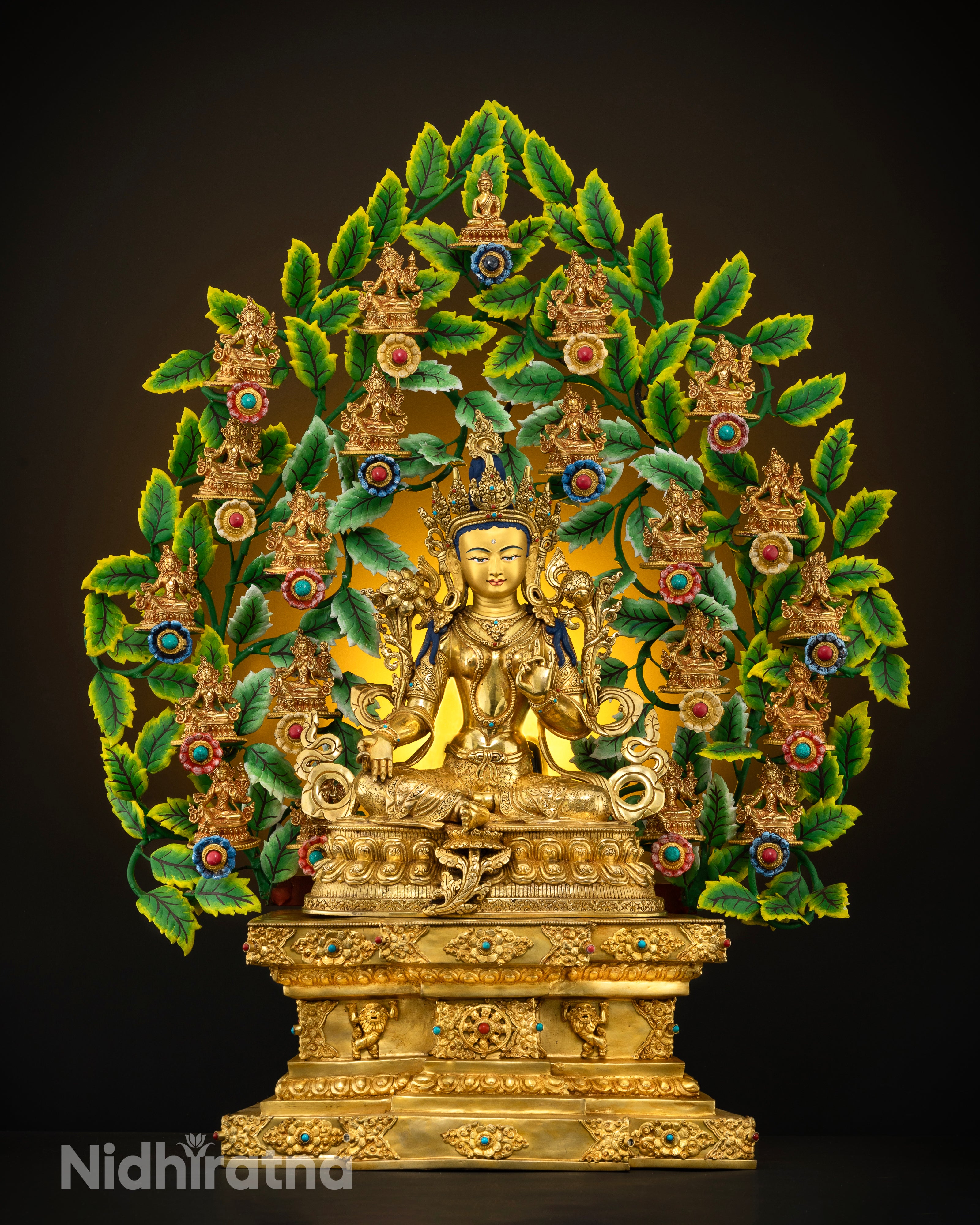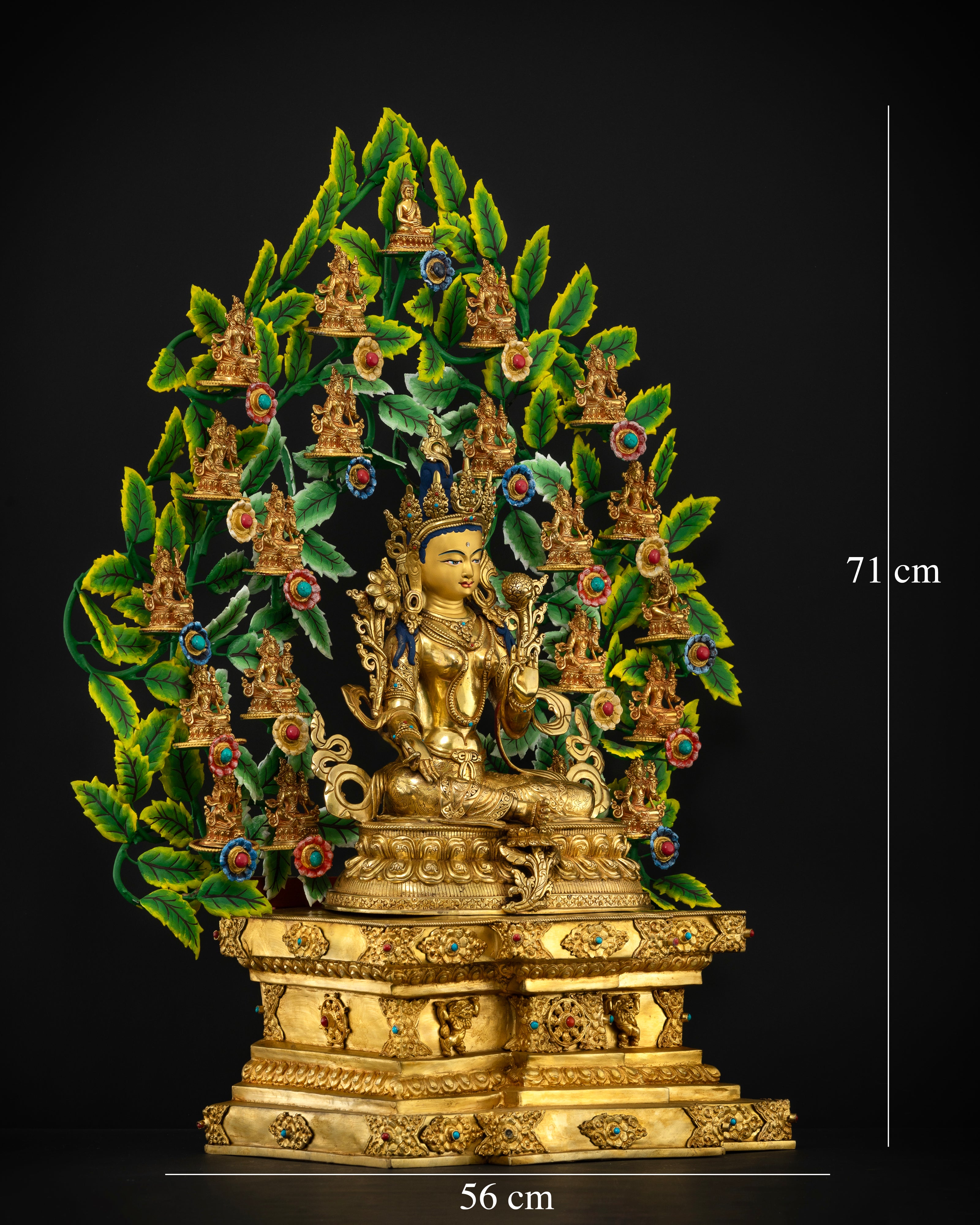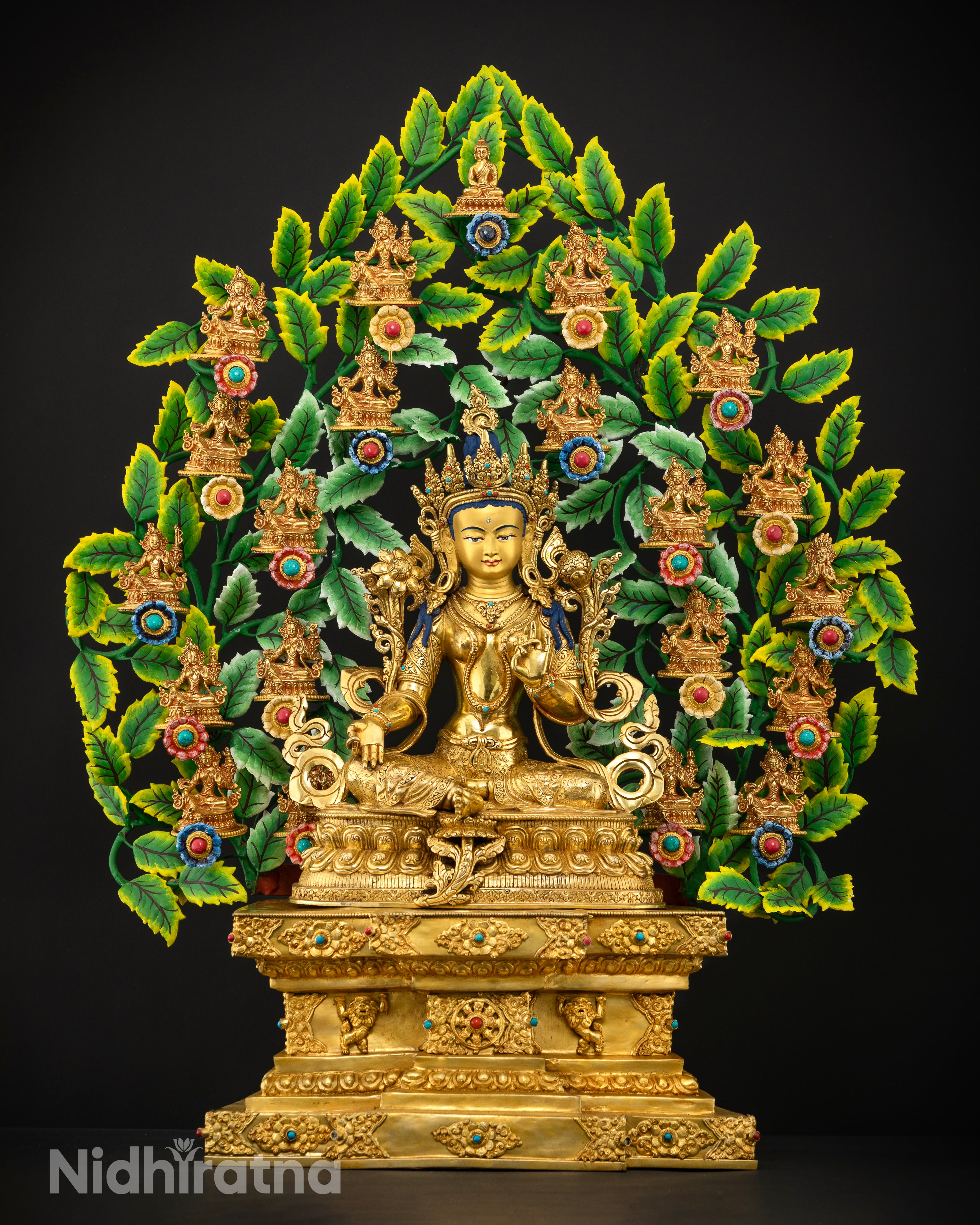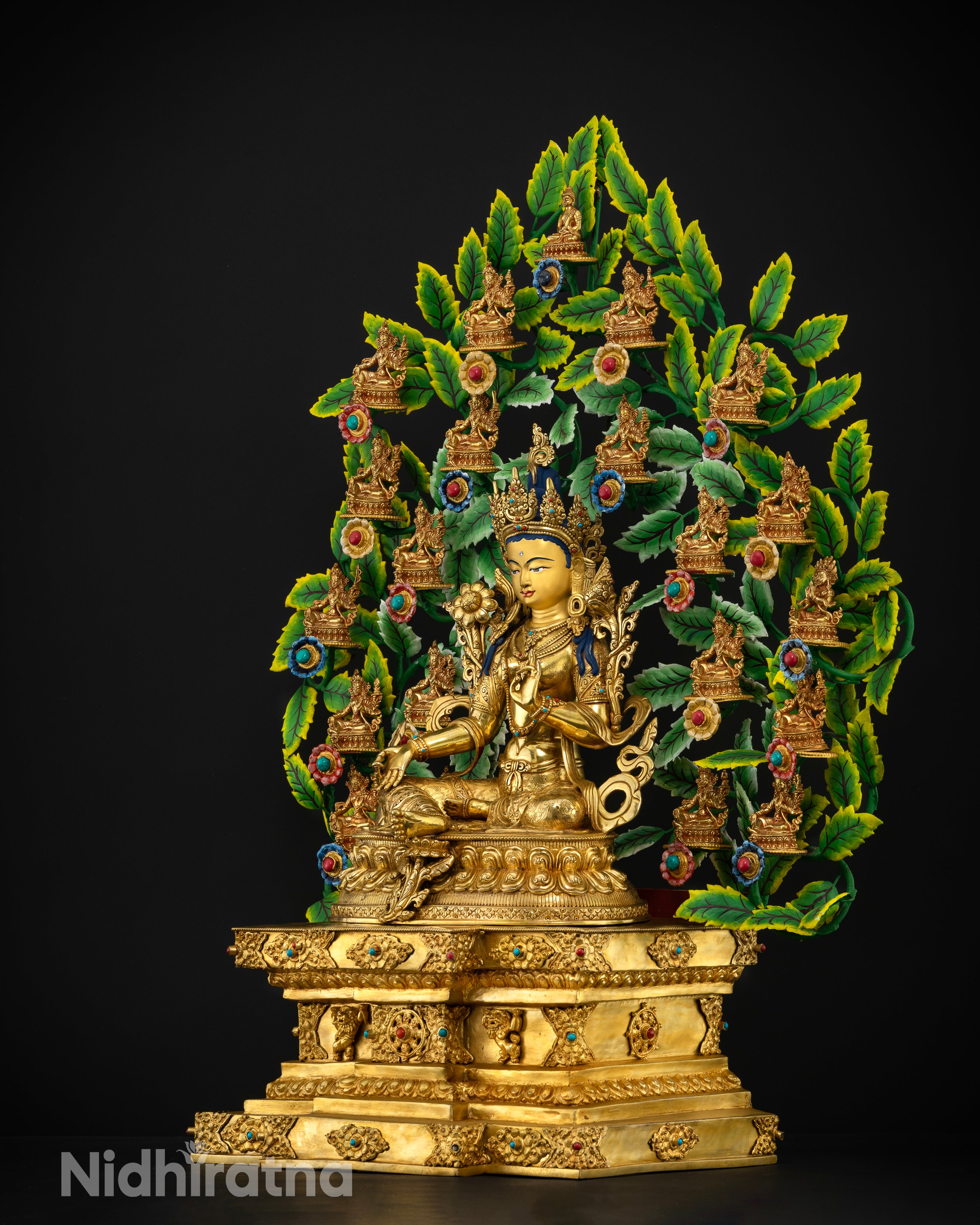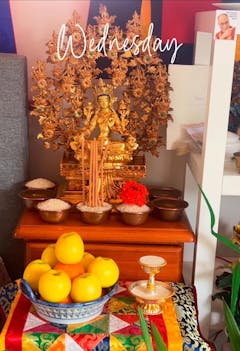21 Tara Statue Collection: 21 Forms of Compassionate Protection
21 Tara Statue Set | Tree Collection with 21 Manifestations of Tara
21 Taras Sculpture Collection | Sacred Buddhist Goddess Statues
Complete 21 Tara Statue Tree Collection | Sacred Female Deity Ensemble
The Sacred Tree of Tara: The 21 Manifestations of Compassion
Nidhiratna's 21 Taras Goddess Statue
The 21 Female Taras Goddesses are considered to be a collection of powerful and revered female Bodhisattvas within Tibetan Buddhism, each associated with different qualities, forms, and purposes. These Female Taras Goddesses statues embody a wide spectrum of divine attributes and are worshipped to help practitioners overcome various obstacles and challenges in their lives.
Each Tara statue represents a distinct facet of wisdom, compassion, and power, aimed at helping beings on their path toward enlightenment. The significance of Tara's many forms highlights the dynamic and transformative nature of the Buddha's wisdom.
1. White Tara (Sitatara)
White Tara is known for her long life and healing qualities. She is often depicted with seven eyes (three on the face, two on the palms, and two on the soles) to symbolize her ability to see the suffering of all beings. White Tara is associated with wisdom, compassion, and the ability to protect from illness and danger.
- Mantra: “Om Tare Tuttare Ture Soha”
- Significance: White Tara is revered for her power to bring longevity, healing, and protection.
- Benefits: Her practice is particularly beneficial for those seeking physical health, longevity, and protection from harm.
2. Green Tara (Shyamatara)
Green Tara is perhaps the most well-known of the Taras and is a symbol of active compassion and protection. She represents the energy of swift action to overcome obstacles and protect from fear, danger, and other negative forces. Green Tara is often called upon to remove fear and bring peace.
- Mantra: “Om Tare Tuttare Ture Soha” (the same as White Tara)
- Significance: Green Tara’s practice aids in the removal of obstacles, including fears, both physical and emotional.
- Benefits: Practicing Green Tara’s mantra can help overcome fear, ignorance, and obstacles, and it provides swift protection.
3. Red Tara (Kurukulla)
Red Tara is the embodiment of passionate and transformative energy. She helps to manifest desires, wealth, and material abundance but in a way that is used for spiritual growth. She also helps to purify negative emotions such as anger and jealousy.
- Mantra: “Om Tare Tuttare Ture Soha”
- Significance: Red Tara is invoked for bringing success and for transforming desire into positive action.
- Benefits: Her practice is helpful in achieving success, both material and spiritual, and in transforming negative emotions.
4. Yellow Tara (Vishvamata)
Yellow Tara is the Tara of prosperity and wealth. She embodies abundance and success and can be called upon for material gain and the removal of obstacles to one’s livelihood.
- Mantra: “Om Tare Tuttare Ture Soha”
- Significance: Yellow Tara is invoked for success in worldly endeavors, business, and financial prosperity.
- Benefits: This practice helps increase prosperity and provides financial stability.
5. Black Tara (Kalaratri)
Black Tara is a fierce protector who removes obstacles, purifies negative karma, and defends against the forces of darkness. She embodies the power to overcome evil and destructive influences.
- Mantra: “Om Tare Tuttare Ture Soha”
- Significance: Black Tara is used for removing obstacles and purifying negative energy.
- Benefits: Her practice helps remove fear, negativity, and unwanted influences.
6. Blue Tara (Ugra Tara)
Blue Tara is associated with wisdom and enlightenment. She helps calm the mind and eliminate confusion.
- Mantra: “Om Tare Tuttare Ture Soha”
- Significance: Blue Tara is invoked for clarity, peace, and spiritual wisdom.
- Benefits: Her practice helps practitioners attain wisdom and clarity, removing mental obstacles.
7. Tara of the North (Dukkha Tara)
This Tara represents the dispelling of confusion and fear, especially the fear of death and dying.
- Mantra: “Om Tare Tuttare Ture Soha”
- Significance: This Tara brings protection during times of fear, especially in situations of loss and impermanence.
- Benefits: She alleviates the fear of death and promotes fearlessness.
8. Tara of the South (Tara Sangha)
This Tara represents inner peace and the attainment of harmonious relationships.
- Mantra: “Om Tare Tuttare Ture Soha”
- Significance: She is invoked to bring peaceful interactions and dissolve conflicts.
- Benefits: Helps practitioners experience calmness in relationships and within themselves.
9. Tara of the West (Tara Tsalpa)
This Tara is invoked for overcoming obstacles and for protection against forces that disturb the mind.
- Mantra: “Om Tare Tuttare Ture Soha”
- Significance: This Tara focuses on clearing mental blocks and dispelling negative thoughts.
- Benefits: Helps to gain control over mental obstacles.
10. Tara of the East (Sutra Tara)
This Tara is known for helping practitioners attain spiritual wisdom and realize the true nature of all phenomena.
- Mantra: “Om Tare Tuttare Ture Soha”
- Significance: Tara of the East brings understanding and insight into the true nature of existence.
- Benefits: Helps practitioners understand the impermanence of life and attain spiritual wisdom.
11. Tara of the Above (Maitri Tara)
Representing a higher spiritual plane, this Tara brings joy and harmony, freeing beings from attachment and ignorance.
- Mantra: “Om Tare Tuttare Ture Soha”
- Significance: Invoked for freeing oneself from attachments and the cycle of suffering.
- Benefits: Bring inner peace and joy, allowing practitioners to rise above worldly concerns.
12. Tara of the Below (Vajra Tara)
Vajra Tara is symbolic of the strength of the diamond. She protects practitioners from the harms of the world and leads them towards ultimate realization.
- Mantra: “Om Tare Tuttare Ture Soha”
- Significance: She grants invulnerability to negative influences and ensures spiritual growth.
- Benefits: Her practice shields from external and internal harm, offering ultimate protection.
13. Tara of Fearlessness (Abhaya Tara)
Abhaya Tara symbolizes fearlessness and strength. She is invoked to dispel fear and help overcome obstacles that cause anxiety and insecurity.
- Mantra: “Om Tare Tuttare Ture Soha”
- Significance: She provides safety from all fears and instills a sense of inner security.
- Benefits: Provides courage, dissipates fears, and brings the strength to face challenges.
14. Tara of Wisdom (Prajna Tara)
This Tara is a representation of the wisdom that transcends ordinary understanding, helping practitioners achieve enlightenment.
- Mantra: “Om Tare Tuttare Ture Soha”
- Significance: She guides one towards understanding the truth and wisdom beyond the material world.
- Benefits: Helps in overcoming ignorance and leads one towards enlightenment.
15. Tara of Power (Shakti Tara)
Shakti Tara symbolizes the power of feminine energy and is invoked for strength and vitality.
- Mantra: “Om Tare Tuttare Ture Soha”
- Significance: She helps activate the energy within to overcome obstacles and challenges.
- Benefits: Brings empowerment, vitality, and inner strength.
16. Tara of Compassion (Karuna Tara)
Karuna Tara is the embodiment of boundless compassion and is invoked to bring compassion to the practitioner and the world.
- Mantra: “Om Tare Tuttare Ture Soha”
- Significance: She fosters deep compassion for all living beings.
- Benefits: Helps practitioners develop empathy and compassion towards all beings.
17. Tara of Protection (Raksha Tara)
Raksha Tara protects from dangers both seen and unseen. She is the protector who guards practitioners from harmful forces.
- Mantra: “Om Tare Tuttare Ture Soha”
- Significance: She safeguards against harmful influences and danger.
- Benefits: Provides a shield from physical and spiritual harm.
18. Tara of the Unknown (Tara Avinashini)
This Tara represents the unknown aspects of life and the mysteries that lie beyond the conscious mind.
- Mantra: “Om Tare Tuttare Ture Soha”
- Significance: She provides insight into unknown realms and helps navigate life’s mysteries.
- Benefits: Supports those facing uncertainty and helps them find clarity in the unknown.
19. Tara of Spiritual Growth (Vikriti Tara)
Vikriti Tara symbolizes spiritual maturity and inner transformation, guiding one through stages of spiritual development.
- Mantra: “Om Tare Tuttare Ture Soha”
- Significance: She promotes spiritual growth and inner awakening.
- Benefits: Helps individuals progress on their spiritual journey and grow in wisdom.
20. Tara of Liberation (Moksha Tara)
Moksha Tara represents liberation from the cycle of birth and death (samsara). She guides one towards spiritual freedom.
- Mantra: “Om Tare Tuttare Ture Soha”
- Significance: She helps liberate beings from suffering and the cycle of rebirth.
- Benefits: Her practice leads to spiritual freedom and liberation from worldly suffering.
21. Tara of Purity (Shuddhi Tara)
Shuddhi Tara represents the ultimate purification of the body, speech, and mind.
- Mantra: “Om Tare Tuttare Ture Soha”
- Significance: She purifies the practitioner’s negative karma and worldly attachments.
- Benefits: This Tara helps purify the mind and body, promoting spiritual and moral cleanliness.
Significance of the 21 Taras
The 21 Taras are viewed as manifestations of compassion and wisdom in Tibetan Buddhism, reflecting the diverse needs of sentient beings. They embody all aspects of enlightened feminine energy and are seen as protectors and guides on the spiritual journey. Through the various forms of Tara, practitioners can access specific blessings that will help them overcome obstacles, gain wisdom, attract success, and promote inner peace.
The mantras associated with each form of Tara are powerful tools for invoking her blessings. By repeating these mantras, practitioners call upon the specific qualities of Tara that they need most at any given time. Tara’s ultimate role is to provide the necessary aid for spiritual development and overcoming challenges, both material and spiritual.
Benefits of Tara's Practice
Practicing Tara and reciting her mantras can bring numerous benefits, including:
- Protection from Harm: Tara is often invoked to shield individuals from physical danger, emotional turmoil, and spiritual obstacles.
- Healing and Longevity: Many forms of Tara, especially White Tara, are believed to enhance health and ensure a long and prosperous life.
- Spiritual Growth: Tara’s qualities promote the development of wisdom, compassion, and insight.
- Wealth and Prosperity: Certain Taras, like Yellow Tara and Red Tara, attract wealth and success in business and life.
- Emotional Balance: Some Taras, such as Pink Tara, are invoked for emotional healing, love, and harmony in relationships.
The practice of Tara is deeply embedded in Tibetan Buddhist culture and spiritual practice, offering an accessible yet profound way for practitioners to cultivate spiritual and worldly benefits.



